Madrid’s Most Iconic Hotel Finally Reopens
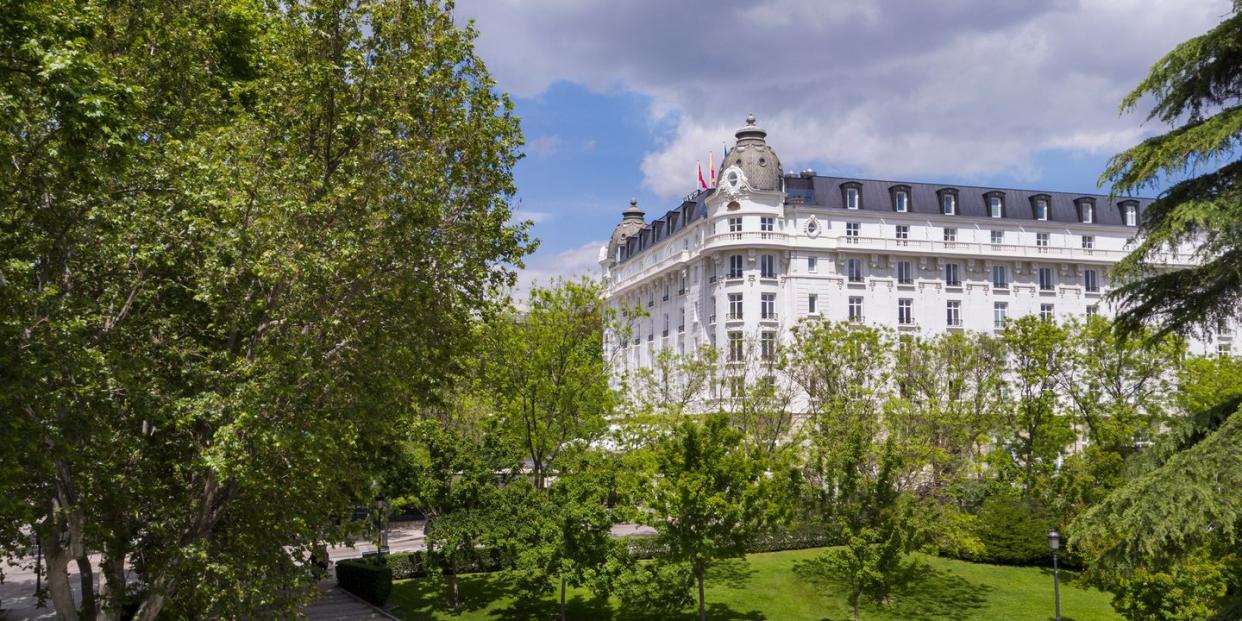
- Oops!Something went wrong.Please try again later.
The story of Madrid’s Ritz begins with a fussy king and a fancy problem. The year was 1906, and Alfonso XIII, the 20-year-old monarch, was planning his wedding. Royals and aristocrats would soon pour into the Spanish capital for the momentous occasion—but where, he shuddered, would they stay? Madrid lacked a cosmopolitan hotel for the elite. And that just wouldn’t do. So the king put in a call to César Ritz himself, and four years later, Alfonso opened his dream hotel, a Belle Epoch wonder in the heart of noble Madrid.
If King Alfonso could time-travel to Madrid a year or two ago, he would have had déjà vu. The city’s top luxury hotels—the Westin Palace; Villa Magna; and, yes, his beloved Ritz—were crumbling, convalescent grandes dames with fraying wall-to-wall carpets and TVs you could carbon-date. So when the Ritz reopened as Mandarin Oriental Ritz, Madrid in April, following a $150 million buy-out and $115 million renovation, Madrileños raised an eyebrow: What were the chances that the city’s most enduring example of old-guard hospitality could reinvent itself? And even if it could, wouldn’t the Ritz be sacrificing the very thing that made it, well, the Ritz?
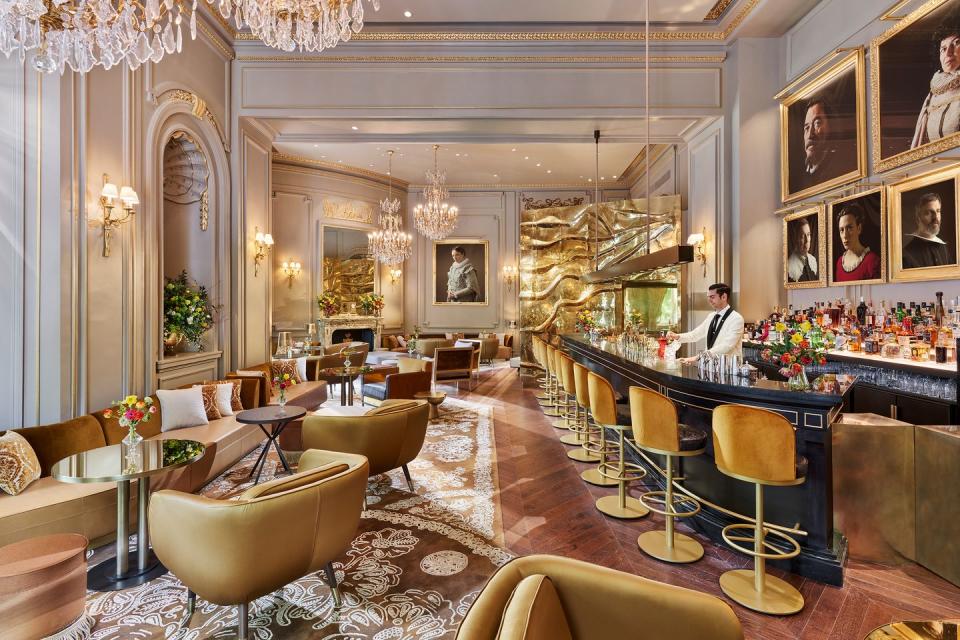
I was pondering all of this one sweltering August afternoon as my taxi glided up the Paseo del Prado toward the Ritz 2.0, where I’d be staying the night. It was my first visit in three years, and I didn’t know what to expect. When I saw those gold letters etched into the facade, RITZ MADRID, my spine instinctively straightened. I chuckled to myself—it didn’t matter how many times I’d been here (half a dozen) or how many years I’d lived in Madrid (seven): The Ritz makes you feel like you’re somebody. And somebodies don’t slouch.
“Señor Kemper, right this way.” A cheery bellhop escorted me to reception, his coattails flapping gently as he walked. I was already noticing changes. Gone was the rotating door that admitted guests in a steady stream for easy scrutiny by staff. A ten-foot doorway stood in its place, and patrons wandered freely between the sidewalk and the lobby. The hotel felt more open.
Then I looked up: hundreds of leaves cast in silver and gold hovered quiveringly over the foyer like a 3D fresco, their shadows dancing on the marble concierge desk and gold-corniced columns. Beyond it, a new skylight stretched the length of the lobby, bathing coffee-sipping señoras and champagne-clinking couples in afternoon light.
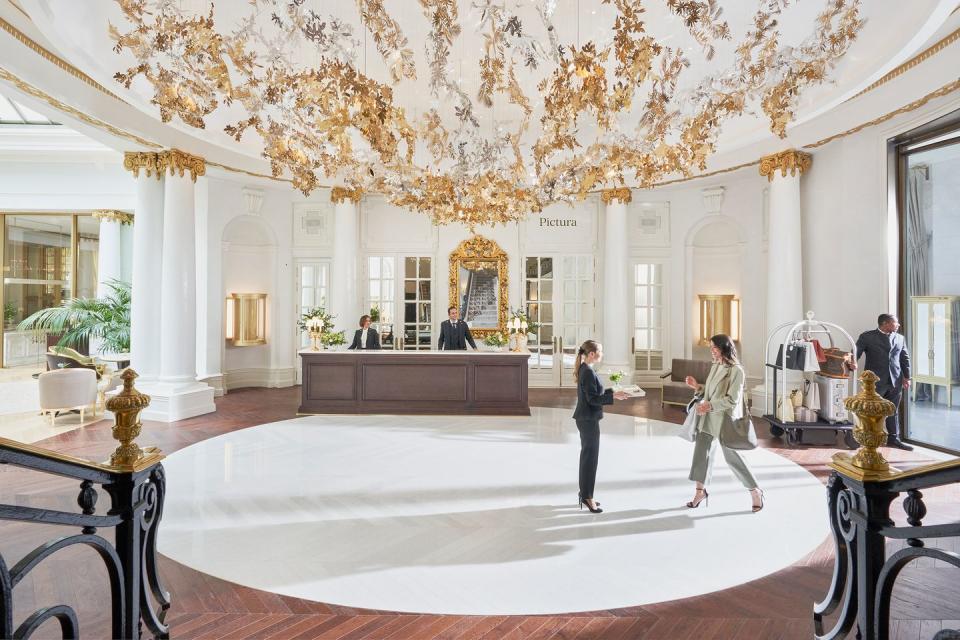
It was time to check in. As I approached reception, I realized I recognized the bespectacled gent behind the desk. He’d checked me in last time, except now he was dressed in a slim-fitting suit by Spanish designer Jorge Vázquez instead of the tweedy old get-up I recalled. Vázquez is the brains behind all of the hotel’s fashion looks (and they really are looks), which include snazzy white blazers for the male bartenders and sumptuous gray velvet jackets for the women butlers.
In the elevator, I wondered what world-famous guests my pal at reception may have made keycards for. He was too young, certainly, to have received the Dukes of Windsor or the mysterious World War II spy Mata Hari, whose stints at the hotel were front-page news, but it is possible he shook hands with Elton John, Fidel Castro, Cary Grant, Jennifer Lopez, Richard Burton, or any number of celebrities who stayed at the hotel. The guest book at the Ritz reads like a highlight reel of 20th-century icons, with the notable exception of Michael Jackson, who was refused entry because of his pets.
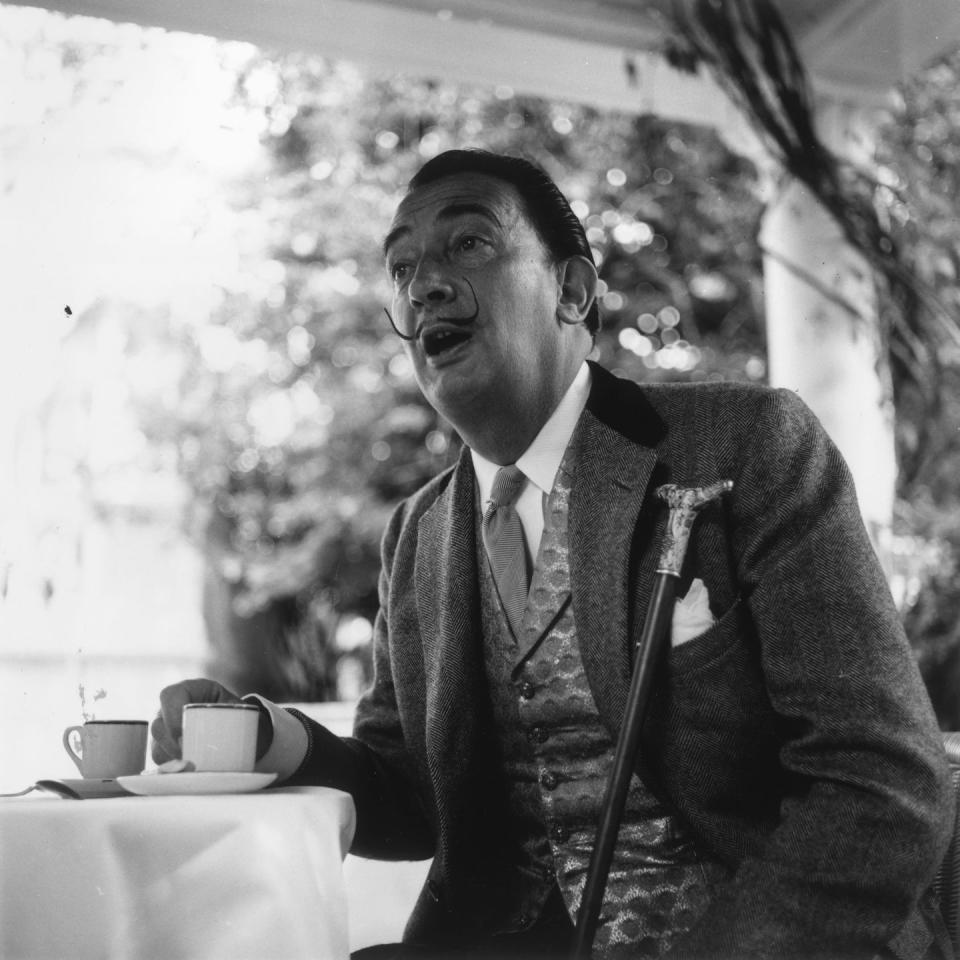
My suite centered on a magnificent oval living room perched above the Plaza de la Lealtad and Madrid’s original stock exchange, a neoclassical stunner built in 1893 by Queen María Cristina (Alfonso XIII’s mother). Through the open windows I could hear the soothing swoosh of Neptuno Fountain, one of the crown jewels of the Paseo del Prado, the entirety of which became a World Heritage site in July.
Inside the room, a custom-fit couch curved snugly along the wall toward the bedroom, where I found pillows emblazoned with my initials on a bed bigger than some Madrid sublets. Gilles et Boissier and Rafael de la Hoz, the firms behind the renovation, had spared no expense. The bathroom, lined from top to bottom with buffed Calacatta marble, had gleaming gold fixtures, a rain shower embedded in the ceiling, and a free-standing tub spotlit by a beam of sunlight. Beside it were tubes of spa-grade Natura Bissé emollients, a lufa, and a sachet of rosemary bath salt. I shot off a text to my editor: “Move Zoom? Bit tied up.” Tied up in a cushy white robe.
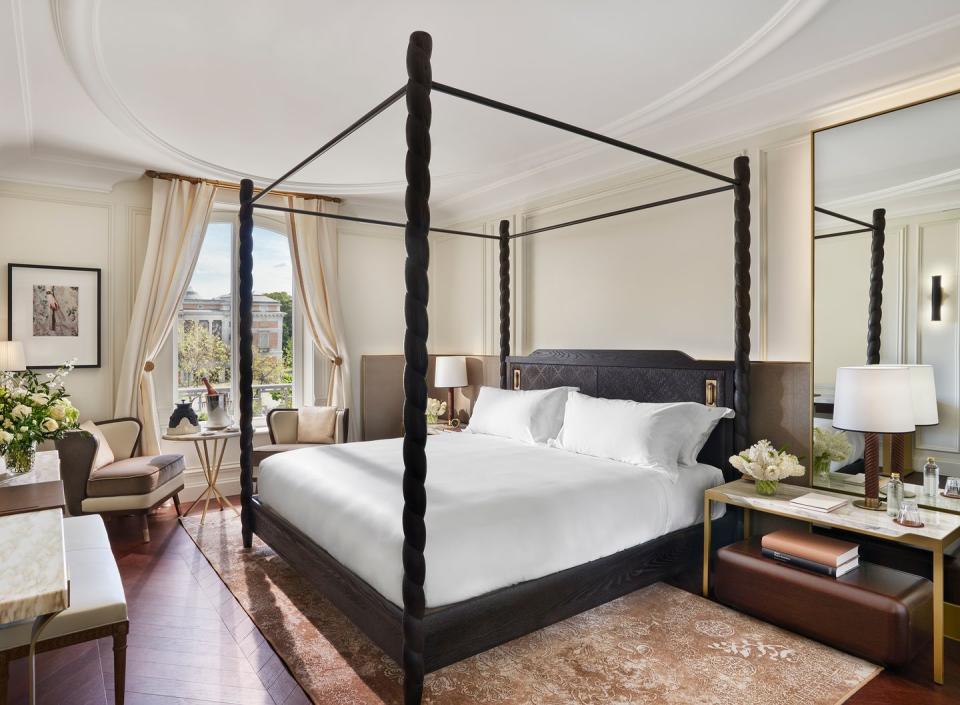
This was not the Ritz that I remembered. In 2017, I stepped into a dark, claustrophobic room that even my late grandmother would’ve deemed behind the times. Cherry-red bed skirts, mustard-colored duvets, tinseled valances, dull green wallpaper—in the 21st century? It’s no wonder locals began calling the Ritz el otro museo (“the other museum”).
Yet in 1910, the Ritz was the epitome of modernity. An ABC newspaper article printed the day after opening marveled that there were electric lights in every room and toilets on every floor. “We admired the exhaustiveness with which all of the details of luxury and comfort were anticipated and attended to,” wrote the author. Those early guests ate dishes like beef Wellington and duck à la presse off of gold-edged Limoge porcelain before retiring to bedchambers appointed with goose-down pillows and ironed Irish linens. Three full-time florists ensured there were fresh-cut flowers everywhere you turned.
But Madrid—and with it, the Ritz—soon fell on hard times. In the 1920s, the dictator Primo de Rivera squandered Spain’s fortunes in colonialist wars in Africa, leading to economic stagnation. Then came the Civil War in the '30s, a terrible bloodbath that left Madrid in ruin and turned the Ritz's lobby into a Red Cross hospital. In 1936, The New York Times reported that the Ritz was serving meals to “militiamen belonging to Red organizations.”
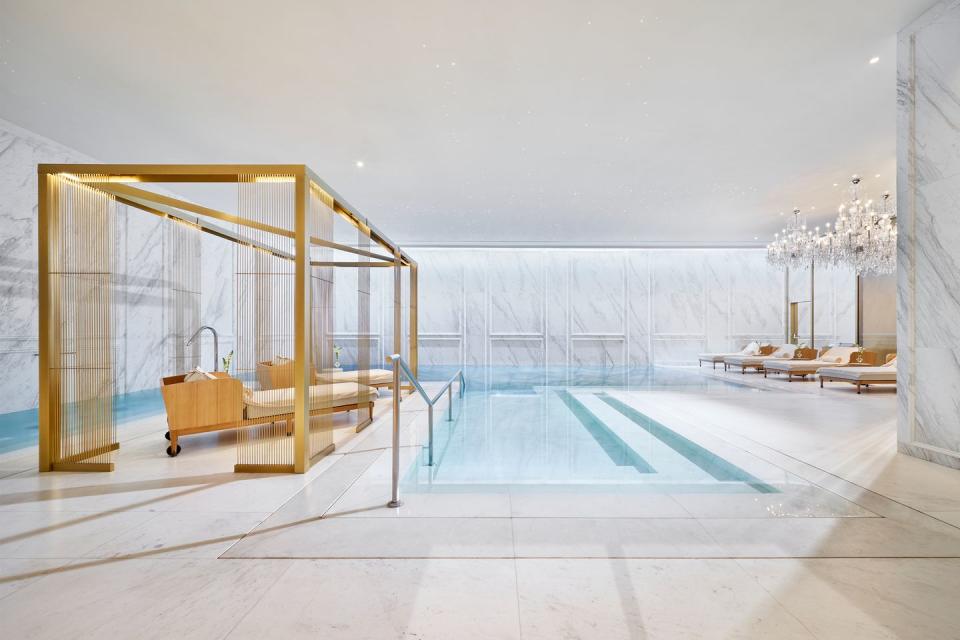
When Madrid fell to Francisco Franco after his coup, Spain became a pariah state. The economy tanked. The Ritz’s high-rolling international clientele had dried up. So the hotel looked inward: to Spain's conservative elite. Royals and aristocrats that had been exiled by the Republic were now back in Madrid at the invitation of Franco, and they needed a place to stay while their bombed-out palaces were restored. To appeal to this decorum-obsessed demographic, dress codes were strictly enforced: no shorts for men; no pants for women. In this new, reactionary Spain, artists and actors were banned from entering the Ritz, a norm that loosened only in the '90s. Every afternoon, British high tea was held in the palm-fronded hall. In the ballrooms, aristocratic children learned to foxtrot on Saturdays. Out in the garden, would-be grooms proposed to their lovers over bottles of champagne in what became a Madrileño rite of passage for the rich.
To see if they were onto something, I nabbed a table at El Jardín del Ritz, the outdoor Spanish bistro run by Quique Dacosta. Dacosta is one of the biggest names in Spanish food—foreigners had never heard of Dènia before Dacosta opened a three-Michelin-star restaurant there. Now the city is on every food lover’s bucket list. I could almost taste the Mediterranean surf in dishes like one-bite crispy Spanish omelet morsels and whole Josper-roasted branzino.
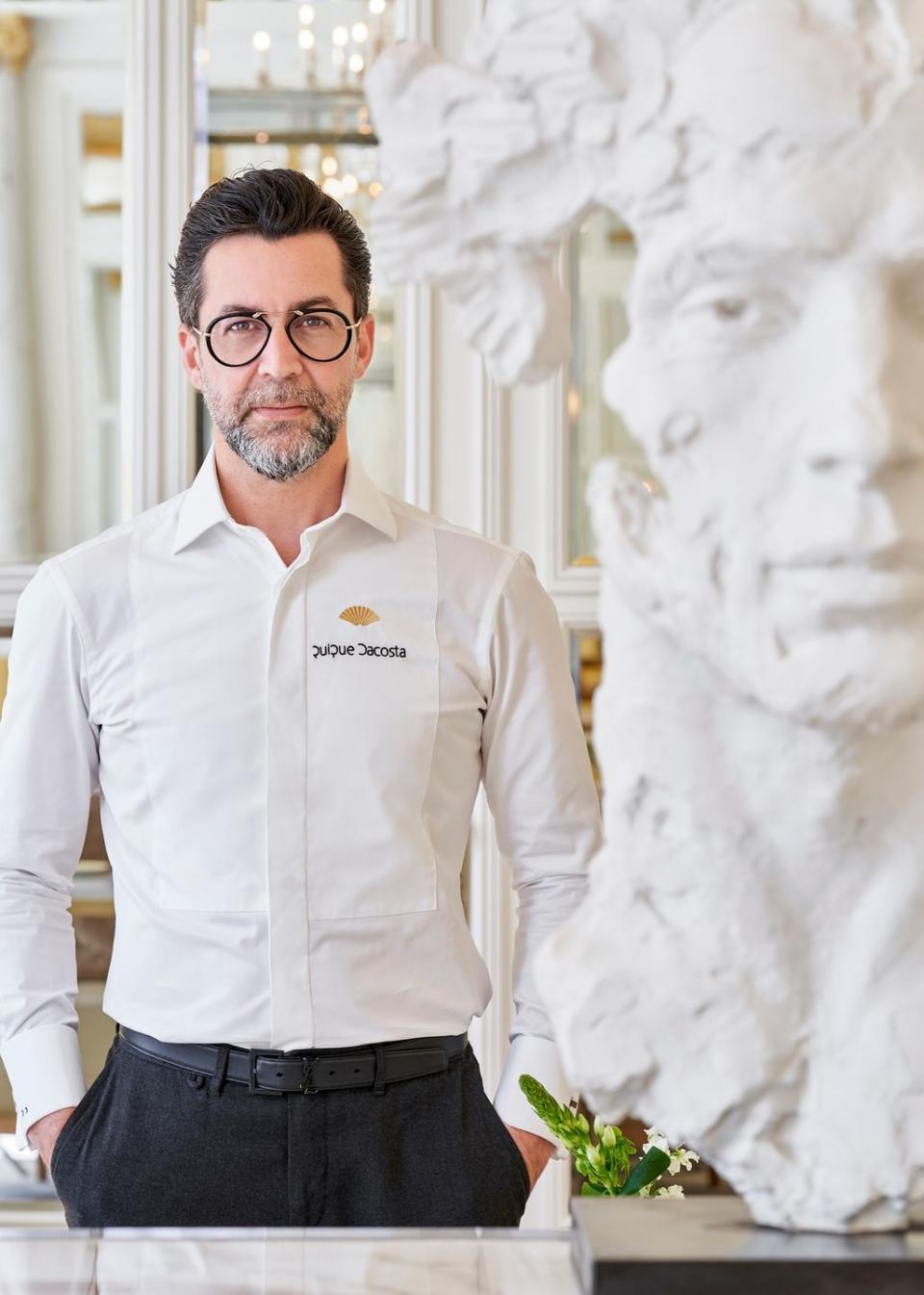
Happily, Dacosta’s signature is on all of the 300-some dishes served in the Ritz—at the champagne bar where you (or, preferably, your boss) can crack open a three-figure can of baby elvers, in the cocktail lounge churning out cheffy drinks and nibbles, and at an eight-table restaurant called Palm Court that serves unabashedly old-school dishes inspired by the Ritz’s historical menus.
Palm Court’s beef Wellington is so succulent that I made the mistake of polishing it off on a 110-degree day—eight-ounce filet, puff pastry, duxelle, and all—and almost passed out during my spa treatment. There was no spa, gym, or pool in the previous Ritz, one of the recurring gripes of customers over the years. Undeterred, Mandarin Oriental burrowed under the garden to create a brand-new wellness wing complete with a marble-walled pool area and full-service spa. On my way to the pool, I crossed paths with a lady emerging from her massage. Her eyelids were heavy, but she was ecstatic: “Delicioso! Divino! Excelente!” she raved to her companion.
But the most buzzed-about news out of the renovated hotel is Deesa, the restaurant local critics have been banging down the door to try. Meals here unfold in a soaring all-white dining room beneath mammoth chandeliers and shimmering gold ceilings; the sconces and columns are original; the wall-size salt “paintings” by Californian artist Rachelle Reichert are new.
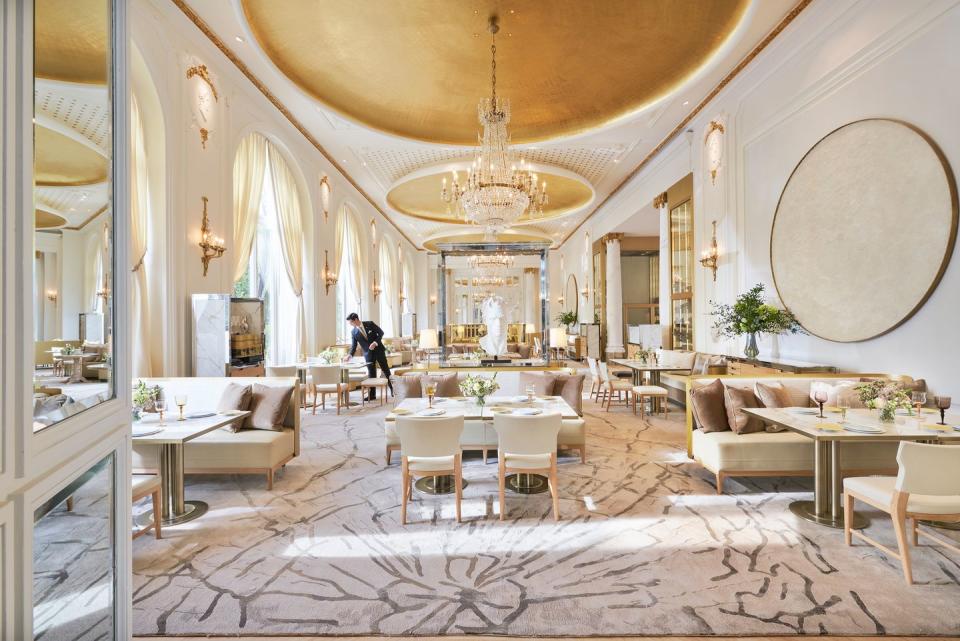
Deesa has two tasting menus, Dacosta’s emblematic sequence from Dènia and a more experimental Madrid option. “My 100-kilometer radius is different here than on the Mediterranean, so I have a whole new set of ingredients to work with, which is exciting” the chef told me over coffee before I headed to check-out. Deesa was closed for summer recess during my visit, so I’ll have to wait to wrap my mind around dishes like shiso red tuna saam with starry moss and sherry-marinated monkfish dribbled with spherefied beads of rosemary oil.
As I rolled my suitcase onto the sidewalk—the sedate Prado Museum to my left and the bustling Plaza de Cibeles on my right—I thought, somewhere, Alfonso XIII is beaming. A Madrid icon had been reborn.
Note: On August 29, the European Union recommended the reinstatement of travel restrictions on U.S. tourists entering the EU’s 27 countries.
You Might Also Like

